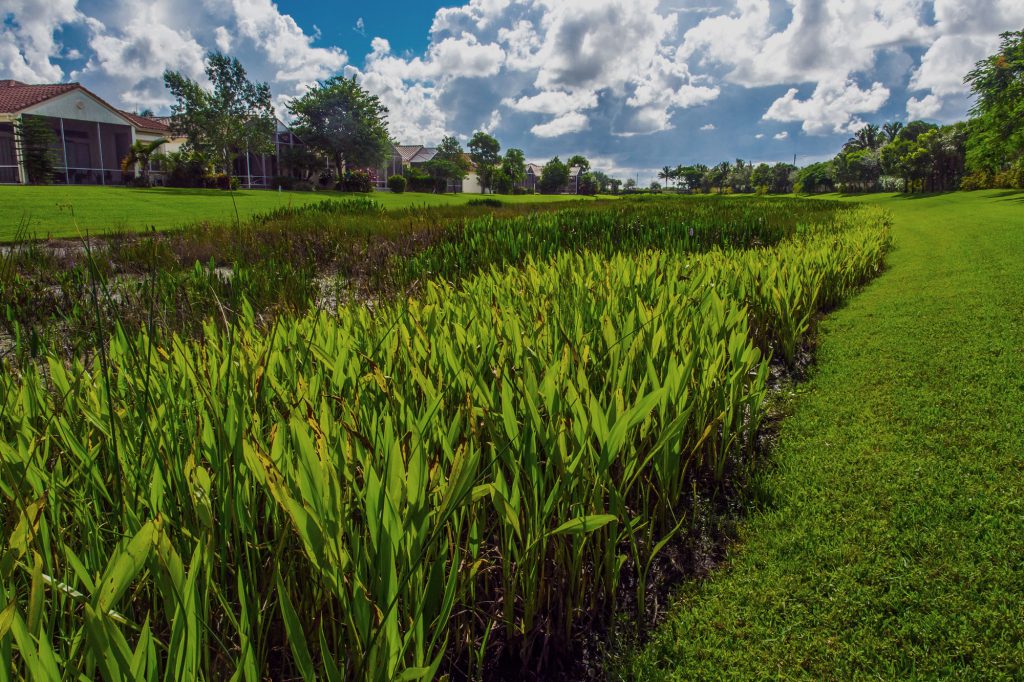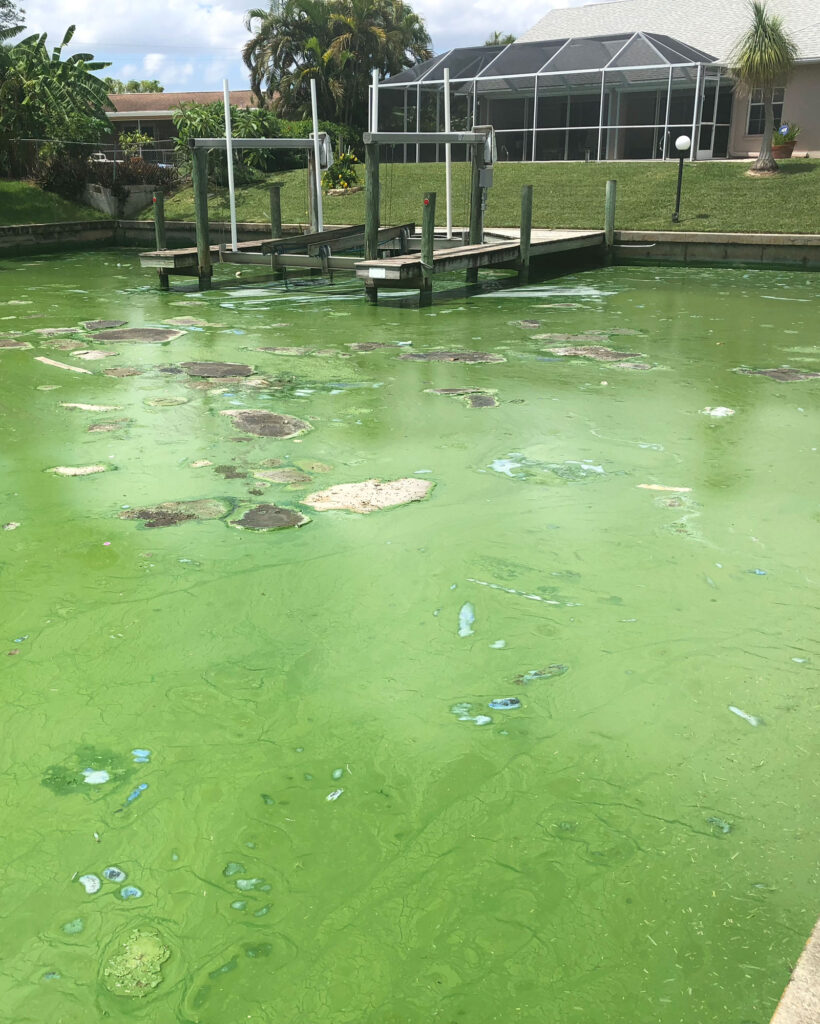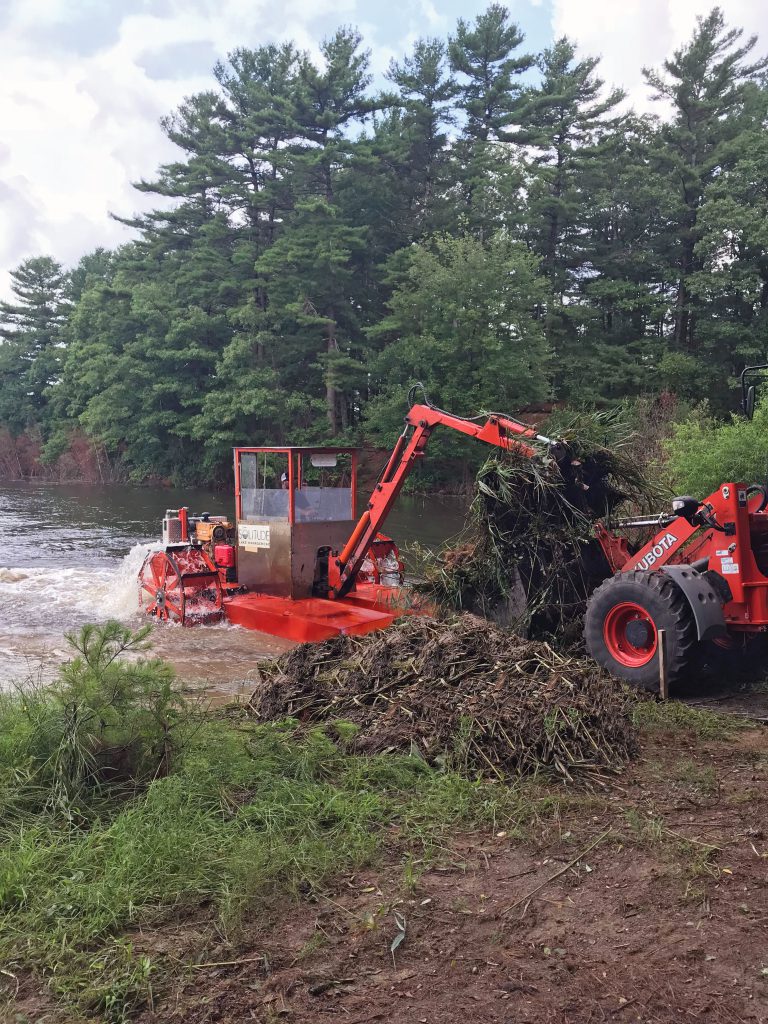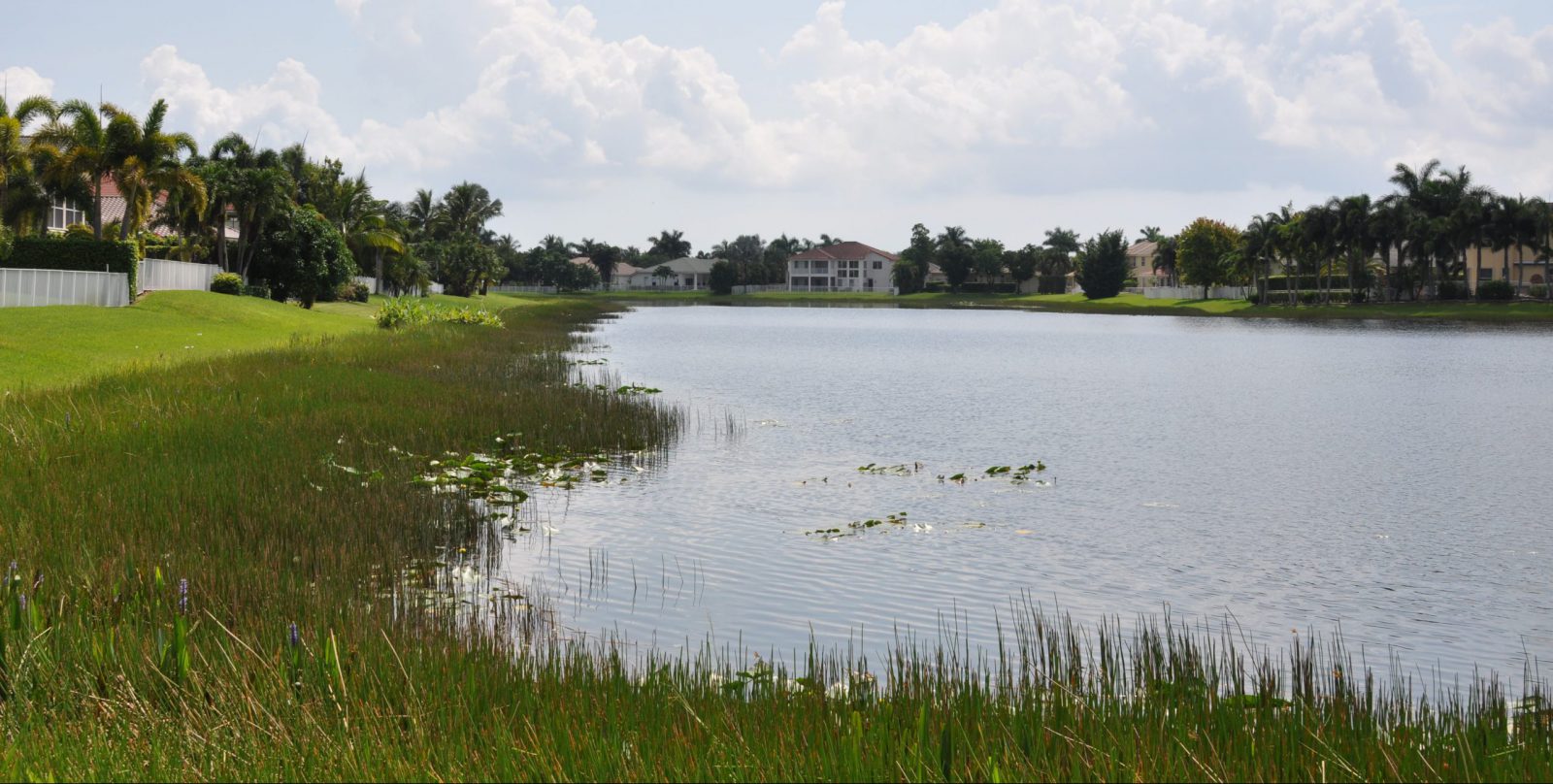
What Types of Aquatic Plants and Algae Exist in Lakes in Florida?
Freshwater aquatic plants are essential to the health of Florida waterbodies. They offer valuable habitats for fish and wildlife. Fish, birds, mammals, reptiles, and amphibians make nests in and feed on aquatic plants. Native aquatic plants in lakes and ponds are generally beneficial, while invasive aquatic plants can crowd out native species, thus destroying sensitive habitats and disrupting the health of local ecosystems. Even changes in native plant communities can affect the composition of an aquatic habitat.
But what are aquatic plants? Are all the plants in a lake considered aquatic plants? How do you know which are good for your waterbody and which are invasive? How do you keep them under control?
What Are Aquatic Plants?
Just because you see these plants growing in your lake or pond doesn’t mean that you have a problem—but you may. There are several different types of aquatic plants that grow in Florida lakes. Knowing the difference between undesirable, noxious weeds is key to maintaining a balanced and healthy lake ecosystem. Some are invasive and should be removed immediately; others, while native, can become a nuisance that requires strategic management.
Many native aquatic plants are considered good for your lake and offer many benefits. In addition to providing food and shelter to wildlife in and around the lake, they also absorb undesirable nutrients, help stabilize the soil, and—of course—add to the aesthetics of the lake or pond.
It’s always beneficial to speak with an aquatic expert before attempting to control or remove any aquatic plants in your waterbody. An expert will help you correctly identify invasive plants. They will also advise you on the best ways to manage undesirable species so that they do not return or further harm the ecosystem.
The Four Types of Aquatic Plants in Florida Lakes
There are four different types of aquatic plants found in Florida lakes, and they each play an important role in the lake’s ecosystem. These general categories are submersed, floating, emergent, and algae. Here’s how you can tell which ones fall into each category.
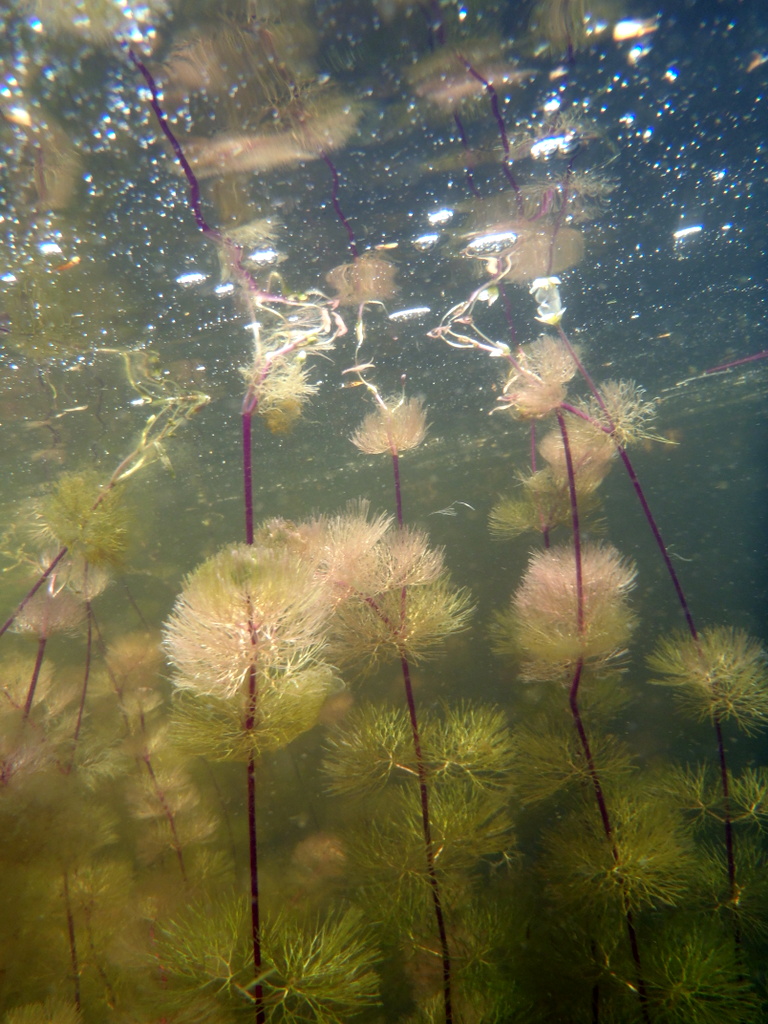
Submersed Plants
Submersed plants grow entirely underwater, with some species rooted in the sediment at the bottom of the waterbody and others free-floating below the surface. They can be found in all Florida lakes and come in many sizes and shapes. Factors such as how much light penetrates the lake, water clarity, pH, temperature, available nutrients, and the stability of the sediment all govern where these plants take hold.
Roles of Submersed Aquatic Plants in Florida Lakes
Submersed aquatic plants have several important roles in Florida lakes, including:
- Serve as shelter and habitat for fish and wildlife
- Increase water clarity
- Stabilize sediments and shorelines
- Support nutrient cycles
- Decrease and increase dissolved oxygen concentrations
- Contribute to the accumulation of muck and detritus
Overgrowth of submersed aquatic plants can interfere with recreational boating, fishing, swimming, commercial navigation, and flood control. It can also adversely affect fish and bird populations.
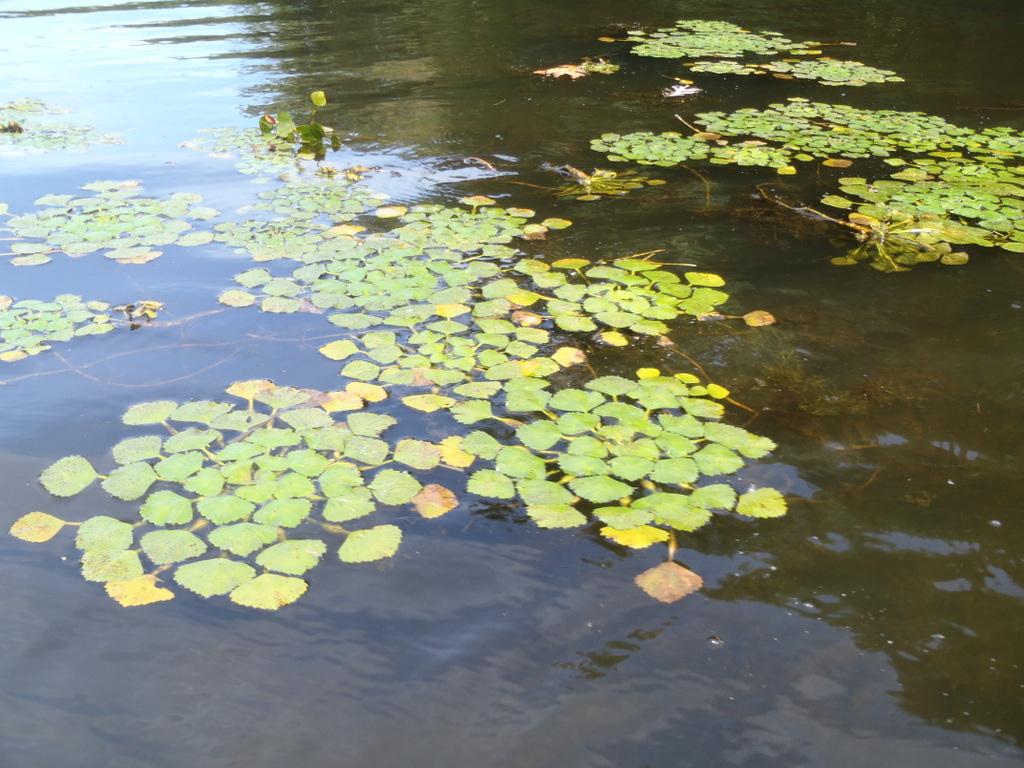
Floating Plants
The floating group of aquatic plants is comprised of free-floating plants and floating-leaved plants. Since they are not anchored in the sediment at the bottom, free-floating plants extract nutrients directly from the water. Floating-leaved plants are rooted in the sediment and have leaves that float on the surface. This group of aquatic plants occurs in many Florida waterbodies and generally grows along the shoreline. The rooted floating-leaved plants often grow across shallow lakes where their roots provide stable surfaces for fish spawning.
Roles of Floating Aquatic Plants in Florida Lakes
Floating and floating-leaved plants play several roles in Florida lakes, including:
- Offer food and habitat for fish and wildlife
- Contribute to sediment, making a lake shallower
- Reduce shoreline erosion
- Provide breeding habitat for mosquitoes
- Contain burrowing insects and organisms
When periods of low water levels are followed by a sudden, rapid rise in the water level, the rhizomes or roots of dead floating-leaved plants often float to the surface, making navigation on the lake or pond difficult and blocking access. Masses of dead rhizomes from native spatterdock and other species may form floating islands that become big enough to support trees. Invasive species such as hyacinth and water lettuce can completely cover the surface of the water and disrupt the fish and wildlife habitat, as well as create problems for recreation, flood control, and navigation.
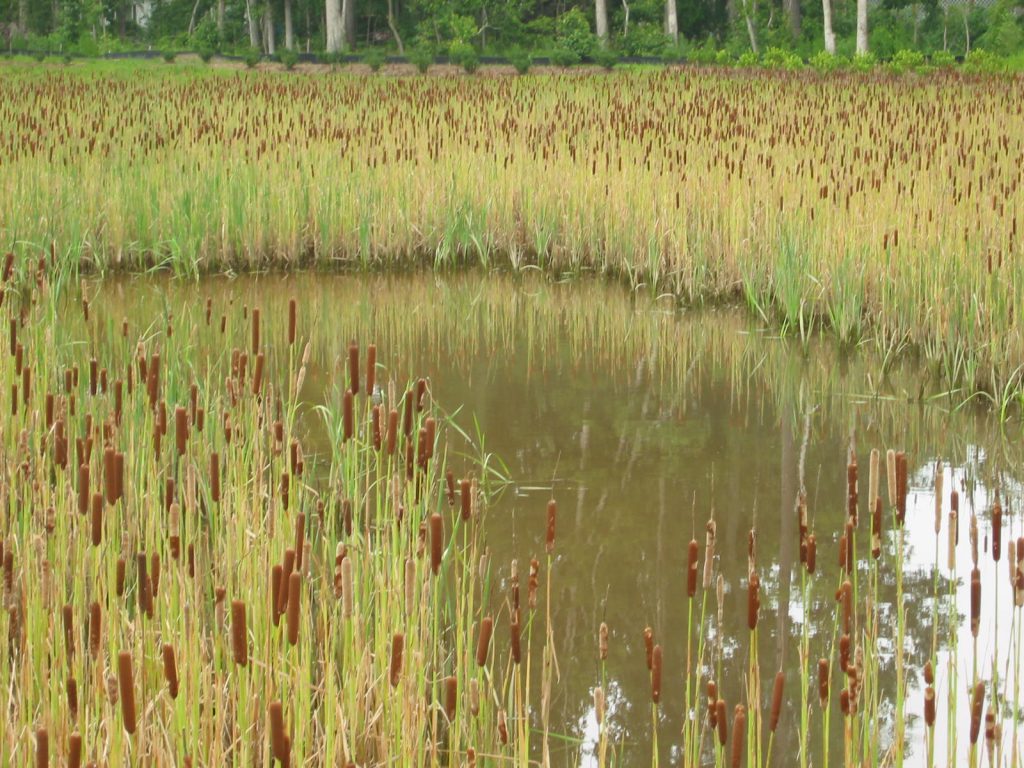
Emergent Plants
Emergent plants grow in shallow areas close to the water’s edge with their roots in submersed or water-saturated soils and their stems, leaves, and flowers entirely above water. They are also referred to as wetland or shoreline plants. They have rigid stems and do not need water to stay upright. During times of low-water conditions, they can grow in damp, exposed sediments.
This group of plants grows in all Florida lakes that have shallow waters and can cover a few feet up to hundreds of feet, depending on the water levels. The easily recognizable cattail, maidencane, and bullrush are examples of emergent aquatic plants. They can grow from the shoreline to a depth of 3-10 feet.
Roles of Emergent Plants in Florida Lakes
Emergent plants play many roles in Florida lakes, including:
- Offer habitat for wildlife
- Supply food for waterfowl
- Reduce shoreline erosion
- Shed leaves and other plant debris that add to the sediments
When periods of low water levels are followed by rapidly rising high water levels, large swathes of emergent plants are often uprooted. These uprooted emergent plants form floating islands called tussocks that provide habitat for birds and wildlife, but can also be a significant navigational hazard and block access to parts of the lake.
Long periods of high water can reduce the amount of emergent plants in a lake or pond since the high water level keeps some of the sunlight from reaching areas where emergent plants grow. During extended periods of low water, accumulated debris from dead and dying emergent plants can cause a lake to become more shallow or even turn into a marsh or swamp.
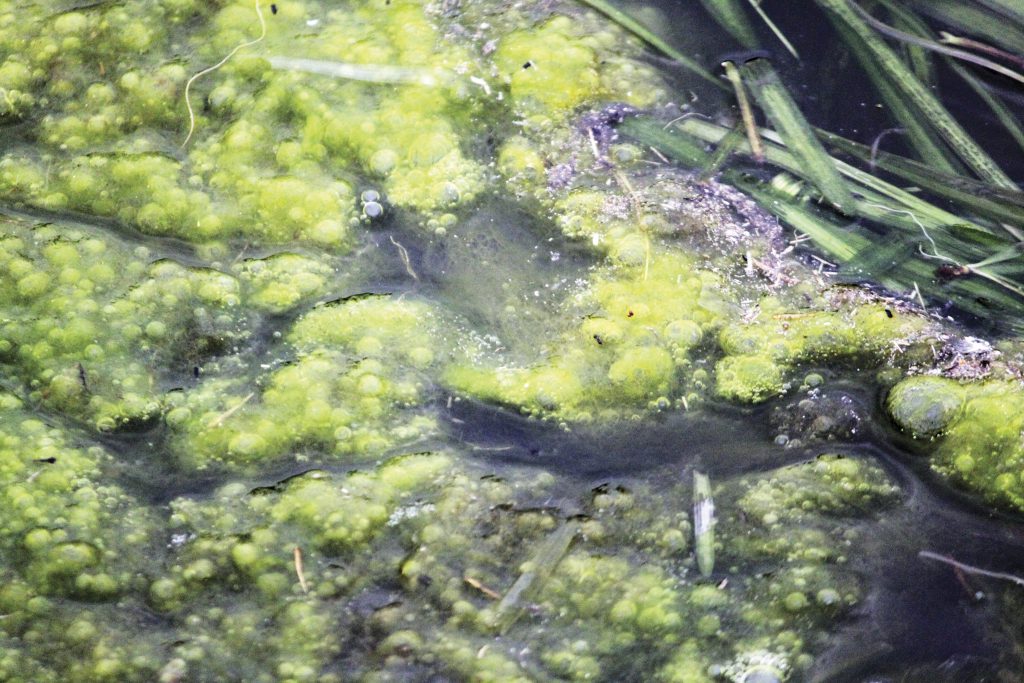
Algae In Florida Ponds
Although algae are in the plant kingdom, they are not technically plants. They are single-celled or multi-celled organisms that don’t have true conducting or supporting tissues. These organisms are what make Florida’s lake waters look green, which isn’t always undesirable. Algae are essential to the ecosystem, as they are a primary component of the food web. When a lake or pond’s ecosystem is out of balance or unhealthy, overgrowth of algae can lead to harmful algal blooms, which release dangerous toxins into the water.
Toxic Blue-Green Algae (Cyanobacteria)
If you live near a lake or pond in Florida, and even if you don’t, you are probably familiar with toxic cyanobacteria (also known as blue-green algae). The state has been plagued with many blooms over the years. Cyanobacteria looks like paint spilled across the surface of a pond or lake. There are quite a few harmful algal species, but the most commonly found genera include Aphanizomenon, Microcystis, Anabaena, and Planktothrix, – all of which can grow quickly in warm water that is rich with nutrients. Foul odors and bad-tasting drinking water are common concerns associated with this problematic algae, but it can also create toxins that are extremely dangerous to humans and deadly to pets, fish, and wildlife. In some cases, even inhaling the toxins can cause respiratory irritation.
Examples of Aquatic Plants in Florida Lakes
Understanding the types of plants that grow in lakes and ponds and learning to identify them is key to keeping the water healthy and thriving. Below are examples of aquatic plants in each general group.
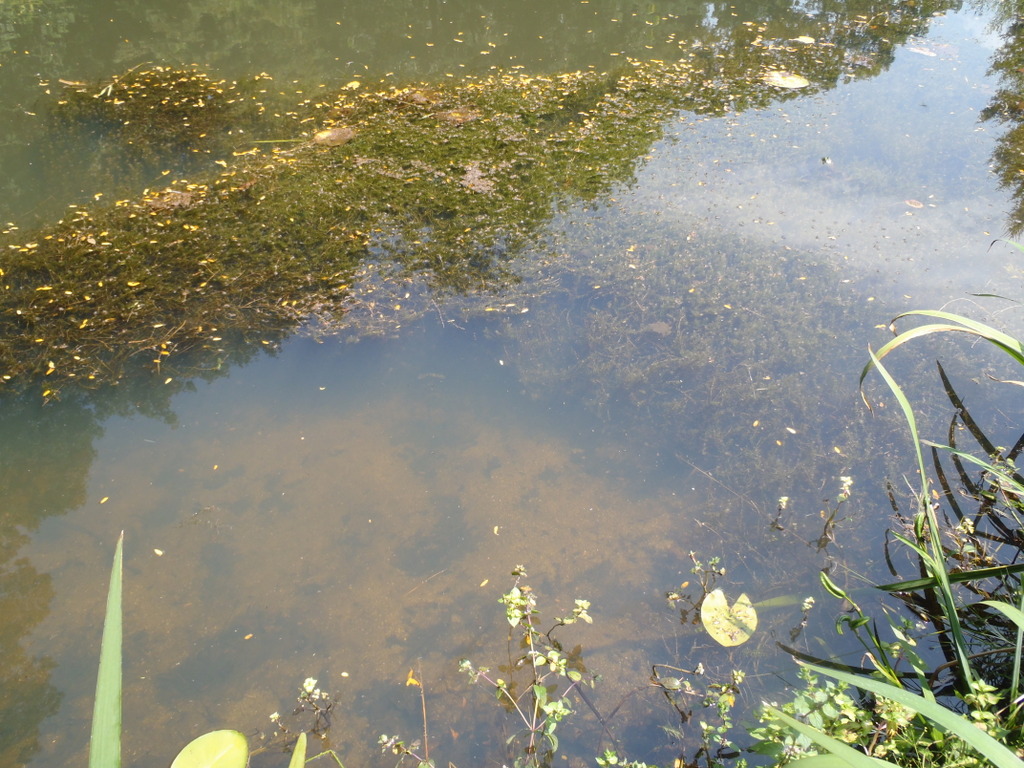
Examples of Submersed Aquatic Plants
Hydrilla and tape grass take root in the sediments at the bottom of the lake. Bladderwort and coontail free-float under the water’s surface. Some submersed species such as tape grass produce flowers that are pollinated whether underwater or at the surface.
The branches of sago pondweed spread across the water just underneath the surface. It can become weedy and displace other more desirable aquatic plants. Fanwort produces blooms that float on the water’s surface, while water milfoils have flower stalks that can emerge as high as six inches out of the water. And some submersed plants have more than one of these characteristics. For example, coontail is a free-floating, submersed plant that produces small blooms that are pollinated underwater.
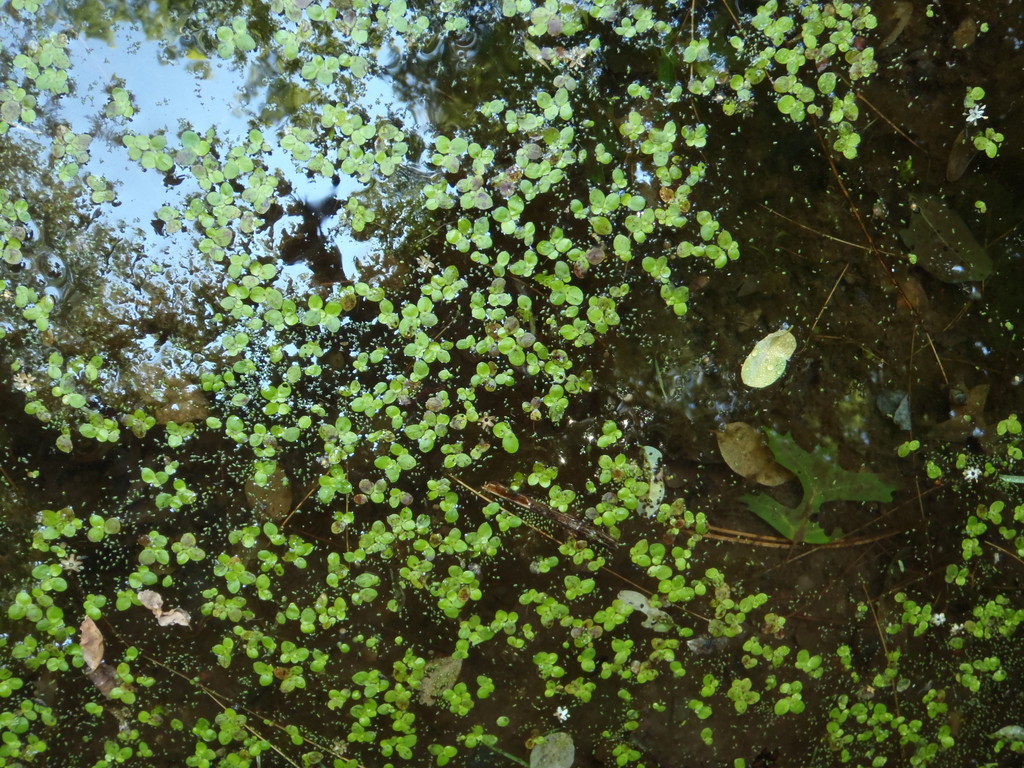
Examples of Floating Aquatic Plants
The free-floating plants native to Florida include the world’s tiniest flowering plant, the duckweed watermeal, as well as two bigger duckweeds called small duckweed and giant duckweed.
The water hyacinth is a free-floating invasive species that has plagued Florida lakes for decades. Experts consider this plant the worst aquatic weed in the world. In many Florida lakes, it requires constant monitoring and management to keep levels low and waterways passable. This species is native to Brazil and has taken over the waters in numerous countries. Salvinia and water lettuce are also non-native invasive floating plant species that create dense mats that cover the water’s surface and keep light from penetrating below.
Examples of floating-leaved plants include water lilies, spatterdock, American lotus, and watershield that grow along the shoreline of many Florida lakes.
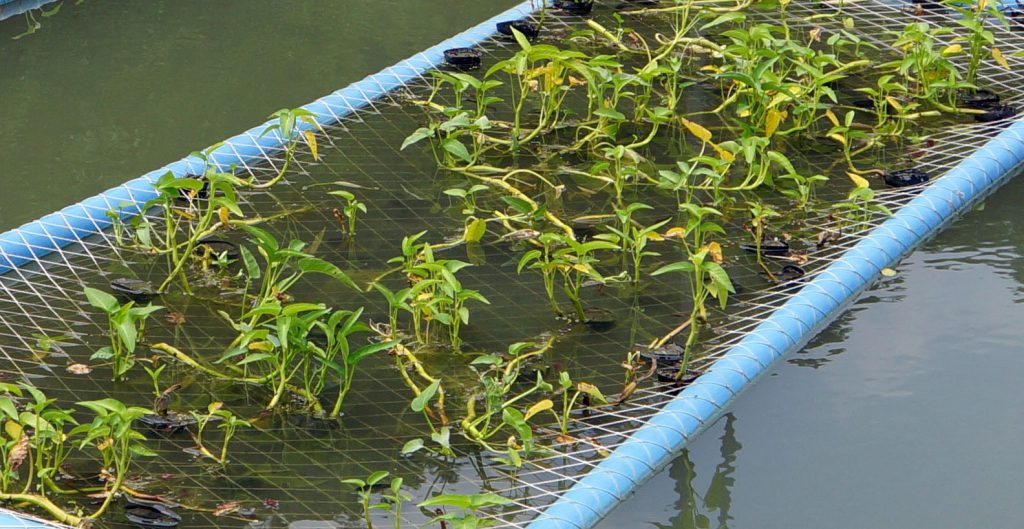
Examples of Emergent Aquatic Plants
There are many emergent plants in Florida lakes that vary wildly in appearance and size. Some emergent plants have big leaves with large spikes of flowers, such as arrowheads and fire flag. Others are small plants that grow mere inches above the water, such as water hyssop (Bacopa spp, not related to hyssop, but similar in appearance).
Water spinach is a viney emergent plant that takes root in the mud and grows out across the water, and the native lake hygrophila is a tall, leafy-emergent plant. The bur-marigold is such a prolific grower that it can fill a large prairie. Also in the emergent plant category are aquatic grasses, sedge, and rushes. Native Florida giant grass species include sugarcane plume grass and giant foxtail. Shorter grass species include maidencane and knotweed that grow in the shallow areas of lakes.
Native Florida sedges include the infamous sawgrass and the star-rush. There are several native beneficial bulrush species and Florida’s true rush, the soft rush. There are also many invasive species of grasses, sedge, and rushes in Florida such as torpedograss, paragrass, napier grass, and West Indian marsh grass.
How to Control Aquatic Plants in Lakes
Since beneficial and invasive species can reach nuisance levels, professional management of aquatic plants in Florida waterbodies is essential. Aquatic ecosystems can easily be disrupted not only by invasive species but by control methods that don’t work or make the situation worse.
There are four types of control methods used to keep aquatic weeds and invasive plants in check: biological control, chemical control, mechanical control, and physical control. The right mix of these methods can keep the lake balanced, healthy, and thriving. The first step to managing undesirable plant species is consulting with a lake and pond management professional. Aquatic experts are knowledgeable and trained in the elimination of nuisance and invasive plant species while adhering to local regulations and safety protocols.
Invasive plants are a compounding problem that will continue to grow if we do not prioritize ongoing monitoring, maintenance, and responsible removal. New innovations like drone technology are making it easier to control aquatic weeds in all types of environments. Take charge of your waterbody’s health and future with a year-round management plan. Our SOL Pro Plans provide continuous support to ensure nuisance and invasive species do not take hold in your aquatic ecosystem.
Managing Nuisance & Invasive Aquatic Weeds
SOLitude Lake Management is a nationwide environmental firm committed to providing sustainable solutions that improve water quality, enhance beauty and preserve natural resources.
SOLitude’s team of aquatic scientists specializes in the development and execution of customized lake, stormwater pond, wetland and fisheries management programs. Services include water quality testing and restoration, algae and aquatic weed control, installation and maintenance of fountains and aeration systems, shoreline erosion control, muck and sediment removal and invasive species management. SOLitude partners with homeowners associations, golf courses, private landowners, businesses and municipalities. SOLitude Lake Management is part of Rentokil, a leading business services company, operating across the United States, Canada and Puerto Rico.
For more information, visit SOLitude Lake Management at solitudelakemanagement.com, and connect on Facebook, LinkedIn and Twitter.








